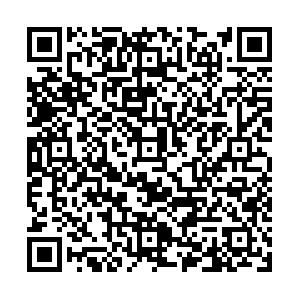Control study on outpatient Morita therapy and cognitive behavioural therapy in the adjuvant treatment of chronic insomnia
-
摘要:
目的 对比门诊森田疗法与失眠的认知行为疗法(CBT-I)对慢性失眠的疗效,了解2种疗法的差异,促进门诊森田疗法在临床中的推广与应用。 方法 选择2019年6月—2020年11月于芜湖市第四人民医院复诊的慢性失眠患者60例,通过随机数字表法分为研究组与对照组,各30例,分别采用门诊森田疗法和CBT-I, 比较2组患者干预前后主观睡眠质量、被束缚症状及焦虑症状。 结果 干预后研究组匹兹堡睡眠质量指数量表(PSQI)评分除催眠药物外,其余各项得分与治疗前比较差异均有统计学意义,对照组除入睡时间和催眠药物外得分均低于治疗前,且研究组干预后的睡眠质量(1.47±0.63)分、入睡时间(1.73±0.91)分、日间功能障碍(1.37±0.93)分及PSQI总分(12.23±4.18)分显著低于对照组[(1.80±0.48)分、(2.67±0.66)分、(2.03±0.77)分、(14.23±3.07)分];研究组中文版神经症被束缚自评量表(SSTN)各维度与总分均较干预前显著减少,对照组仅症状受容性维度与治疗前差异有统计学意义;干预后,研究组汉密尔顿焦虑量表(HAMA)评分为(3.50±2.86)分,对照组为(4.73±2.46)分,均显著低于干预前,2组间得分比较差异无统计学意义(P=0.079)。 结论 2种疗法均对慢性失眠有疗效,门诊森田疗法在睡眠质量、入睡时间、日间功能障碍及总体的睡眠评价上的疗效优于CBT-I,且门诊森田疗法能缓解患者的被束缚症状,可以在临床推广门诊森田疗法。 Abstract:Objective To compare the efficacy of outpatient Morita therapy and cognitive behavioural therapy (CBT-I) in the treatment of chronic insomnia and to understand the difference between the two therapies and to promote the clinical application of outpatient Morita therapy. Methods Sixty patients with chronic insomnia who returned to the Fourth People's Hospital of Wuhu City from June 2019 to November 2019 were included and divided into the study and control groups by random number table method. The subjective sleep quality, constraint symptoms and anxiety symptoms of the two groups were compared before and after intervention by Morita therapy and CBT-I. Results After the intervention, the scores of the study group except those for hypnotic drugs were found to be significantly different from the scores obtained before the treatment. The scores of the control group were lower after treatment than before the treatment, except the scores for sleeping time and hypnotic drugs. After intervention, sleep quality (1.47±0.63), sleep time (1.73±0.91), daytime dysfunction (1.37±0.93) and total score of PSDI (12.23±4.18) in the study group were significantly lower than those in the control group [(1.80±0.48), (2.67±0.66), (2.03±0.77), (14.23±3.07)]. In SSTN, each dimension and total score of the study group were significantly reduced compared with before the intervention, whereas only symptom tolerance dimension of the control group differed from that before the treatment. In HAMA, after the intervention, the scores of the study group (3.50±2.86) and the control group (4.73±2.46) were significantly lower than before treatment, and no significant difference was found between the two groups before and after treatment. Conclusion Both treatments are effective for chronic insomnia. Outpatient Morita therapy is better than CBT-I in terms of sleep quality, time to fall asleep, daytime dysfunction and overall sleep evaluation. Outpatient Morita therapy can relieve the symptoms of confinement in patients and can be promoted in clinic. -
表 1 2组慢性失眠患者一般情况比较
组别 例数 年龄(x ±s,岁) 性别(例) 婚姻状况(例) 文化水平(例) 工作(例) 女 男 已婚 未婚 小学及以下 初中 高中及以上 有 无 研究组 30 52.33±10.86 23 7 28 2 14 7 9 7 23 对照组 30 50.13±14.46 18 12 23 7 19 3 8 6 24 统计量 0.666a 1.926b 2.092b 2.416b 0.198b P值 0.508 0.165 0.148 0.299 0.754 注:a为t值,b为χ2值。 表 2 2组慢性失眠患者干预前后PSQI评分比较
(x ±s,分) 组别 例数 睡眠质量 入睡时间 睡眠时间 睡眠效率 干预前 干预后 干预前 干预后 干预前 干预后 干预前 干预后 研究组 30 2.20±0.81 1.47±0.63a 2.30±0.84 1.73±0.91a 2.57±0.68 2.00±0.98a 2.57±0.86 1.90±1.13a 对照组 30 2.27±0.58 1.80±0.48a 2.47±0.73 2.67±0.66 2.67±0.61 2.07±0.83a 2.73±0.69 1.80±1.13a t值 0.367 2.300 0.822 4.555 0.602 0.284 0.828 0.344 P值 0.715 0.025 0.414 < 0.001 0.550 0.777 0.411 0.732 组别 例数 睡眠障碍 催眠药物 日间功能障碍 总分 干预前 干预后 干预前 干预后 干预前 干预后 干预前 干预后 研究组 30 1.30±0.60 0.93±0.45a 2.80±0.76 2.83±0.65 2.27±0.91 1.37±0.93a 16.00±2.53 12.23±4.18a 对照组 30 1.27±0.52 1.07±0.37a 2.67±0.84 2.80±0.66 2.47±0.68 2.03±0.77a 16.53±2.52 14.23±3.07a t值 0.231 1.261 0.643 0.197 0.965 3.037 0.818 2.111 P值 0.818 0.213 0.523 0.845 0.338 0.004 0.416 0.039 注:与同组干预前比较,aP<0.05。 表 3 2组慢性失眠患者干预前后SSTN改善情况
(x ±s,分) 组别 例数 精神交互 注意固着 思想矛盾 身体社会机能 干预前 干预后 干预前 干预后 干预前 干预后 干预前 干预后 研究组 30 12.87±2.45 11.13±2.58a 8.30±2.55 6.83±2.63a 10.47±2.13 8.77±1.76a 6.80±2.64 5.50±2.16a 对照组 30 12.77±2.75 12.90±2.44 8.40±2.86 8.60±2.88 10.70±1.75 10.57±1.72 7.17±2.26 7.07±2.39 t值 0.149 2.723 0.143 2.480 0.464 4.016 0.577 2.662 P值 0.882 0.009 0.887 0.016 0.644 < 0.001 0.566 0.010 组别 例数 症状受容性 完善欲 总分 干预前 干预后 干预前 干预后 干预前 干预后 研究组 30 9.60±1.43 8.17±2.49a 4.70±2.07 3.83±1.51a 52.73±9.20 44.23±8.61a 对照组 30 9.60±1.40 9.00±1.86a 4.87±1.94 4.83±1.97 53.50±8.44 52.97±8.50 t值 0.000 1.468 0.322 2.209 0.337 3.954 P值 1.000 0.147 0.749 0.031 0.738 < 0.001 注:与同组治疗前比较,aP<0.05。 表 4 2组慢性失眠患者干预前后HAMA改善情况
(x ±s,分) 组别 例数 干预前 干预后 t值 P值 研究组 30 7.50±3.95 3.50±2.86 5.716 < 0.001 对照组 30 7.43±2.97 4.73±2.46 8.573 < 0.001 t值 0.074 1.789 P值 0.941 0.079 -
[1] 朱茜, 丘志琼, 张虹桥. 认知行为疗法联合佐匹克隆治疗慢性失眠症的临床研究[J]. 哈尔滨医药, 2020, 40(3): 265-266. https://www.cnki.com.cn/Article/CJFDTOTAL-HBYY202003036.htm [2] 郑丽卿. 药物疗法、认知-行为疗法及两者联合对慢性失眠的短期和长期治疗效果探析[J]. 中外医疗, 2017, 36(28): 100-102. https://www.cnki.com.cn/Article/CJFDTOTAL-HZZZ201728037.htm [3] 张慧芳, 郭华, 祁博, 等. 正念减压治疗对睡眠障碍患者睡眠质量及不良情绪的影响[J]. 国际精神病学杂志, 2020, 47(6): 1166-1168. https://www.cnki.com.cn/Article/CJFDTOTAL-GWYJ202006021.htm [4] 何倩柠, 陶玉倩, 黄民, 等. 慢性失眠的认知行为治疗研究进展[J]. 中国临床药理学杂志, 2018, 34(18): 2235-2237, 2240. https://www.cnki.com.cn/Article/CJFDTOTAL-GLYZ201818029.htm [5] 高祖涛, 魏慧军, 赵晓东. 失眠障碍认知行为治疗的临床研究进展[J]. 世界睡眠医学杂志, 2020, 7(5): 920-922. doi: 10.3969/j.issn.2095-7130.2020.05.072 [6] 中村敬. 门诊森田疗法要点[C]. 第八届中国森田疗法学术交流大会论文集, 2010: 4-9. [7] 张鹏, 李雁鹏, 吴惠涓, 等. 中国成人失眠诊断与治疗指南(2017版)[J]. 中华神经科杂志, 2018, 51(5): 324-335. doi: 10.3760/cma.j.issn.1006-7876.2018.05.002 [8] 刘贤臣, 唐茂芹, 胡蕾, 等. 匹兹堡睡眠质量指数的信度和效度研究[J]. 中华精神科杂志, 1996, 29(2): 103-107. https://www.cnki.com.cn/Article/CJFDTOTAL-ZHMA199602018.htm [9] 李江波, 刘培培, 戎伟, 等. 中文版神经症被束缚自评量表的信度、效度[J]. 中国健康心理学杂志, 2016, 24(6): 897-900. https://www.cnki.com.cn/Article/CJFDTOTAL-JKXL201606029.htm [10] 陆林. 沈渔邨精神病学[M]. 6版. 北京: 人民卫生出版社, 2018: 573-574. [11] 常婷. 不同亚型慢性失眠患者与焦虑抑郁状态的相关性研究[D]. 银川: 宁夏医科大学, 2019. [12] 郑新伟. 慢性失眠患者认知功能损害的相关因素分析[D]. 石家庄: 河北医科大学, 2020. [13] 姚春玲. 失眠患者焦虑抑郁情绪对认知功能影响的研究[D]. 南宁: 广西中医药大学, 2020. [14] 孙芸. CBT结合右佐匹克隆治疗慢性失眠的临床效果及依从性研究[D]. 天津: 天津医科大学, 2017. [15] 张艳, 李业平. 门诊森田疗法对低受容性抑郁障碍患者治疗一例报告[J]. 铜陵职业技术学院学报, 2020, 19(3): 23-26, 62. https://www.cnki.com.cn/Article/CJFDTOTAL-TLZY202003007.htm [16] 化振, 杨来启, 马文涛, 等. 森田疗法在强迫症中的临床应用[J]. 国际精神病学杂志, 2018, 45(3): 417-418, 436. https://www.cnki.com.cn/Article/CJFDTOTAL-GWYJ201803010.htm [17] 余静, 陈妮, 周宝. 药物结合森田疗法治疗焦虑症88例效果观察[J]. 宁夏医学杂志, 2017, 39(7): 629-630. https://www.cnki.com.cn/Article/CJFDTOTAL-NXYX201707020.htm [18] 宋旭峰. 森田疗法联合运动对失眠患者的临床疗效[J]. 世界睡眠医学杂志, 2017, 4(6): 388-392. doi: 10.3969/j.issn.2095-7130.2017.06.015 [19] 张昕红, 陈钊, 裴靖远, 等. 森田疗法合并佐匹克隆治疗轻型脑卒中患者睡眠障碍疗效观察[J]. 内蒙古民族大学学报(自然科学版), 2019, 34(6): 529-531. https://www.cnki.com.cn/Article/CJFDTOTAL-NMMS201906016.htm -

 点击查看大图
点击查看大图
计量
- 文章访问数: 1170
- HTML全文浏览量: 397
- PDF下载量: 8
- 被引次数: 0



 下载:
下载: 